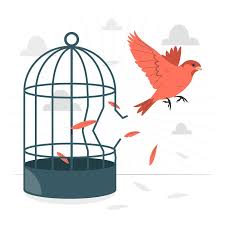When we hear the word “addict,” we often picture someone in a dark alley with a needle in their arm. But the truth is, addiction comes in many forms—and most of us are hooked on something, whether it’s food, work, exercise, social media, shopping, or a person!
At its core, addiction is about losing control. Even when it leads to serious consequences—like damaged relationships, job loss, or declining health—people often continue to seek out the substance or behaviour that’s hurting them.
So what makes addiction so powerful? And why is it so hard to break free?
Recent research reveals that addiction is a chronic, complex brain disease—not simply a matter of weak will or bad choices. While treatment can help people manage their addiction, the risk of relapse is always present, even after years of recovery.
One of the reasons addiction is so hard to overcome is that it physically rewires the brain.
There’s still a widespread myth that addiction is a moral failing, but science tells a different story. Addiction changes the brain’s structure and function, especially in areas that govern decision-making, impulse control, and emotional regulation. Undoing those changes takes time, support, and commitment.
Under normal conditions, the brain rewards healthy activities—like eating, exercising, or spending time with others—by releasing feel-good chemicals like dopamine. It also helps us weigh risks and control impulses. But addictive substances override these systems.
Drugs and alcohol hijack the brain’s reward circuitry, flooding it with dopamine and creating an intense sense of pleasure. Over time, the brain associates the substance or activity with reward so strongly that it begins to crave it, just to feel “normal.” Simultaneously, these substances can overstimulate emotional centers, making the person feel anxious or stressed when they’re not using. This cycle can impair the prefrontal cortex—the part of the brain responsible for judgment and self-control—making it harder for individuals to resist the urge, even when they understand the dangers.
Brain scans of people with addiction often show reduced activity in the frontal cortex. That means someone might clearly recognise the risks—losing their job, damaging their family, or even going to jail—but still feel helpless to change course.
It’s important to remember that not everyone who uses drugs becomes addicted. Scientists are still working to understand why. Genetics are part of the puzzle—addiction often runs in families—but there’s no single “addiction gene.” Like heart disease or diabetes, addiction results from a mix of genetic and environmental factors.
Risk factors include growing up with a parent who struggles with addiction, experiencing trauma in childhood, or living under constant stress. Early exposure to drugs and/or alcohol—especially during adolescence—also increases the chances of addiction later on.
Teens are especially vulnerable because their brains are still developing. The parts responsible for impulse control and long-term thinking aren’t fully matured, while the reward system is in high gear. This makes risky behaviours, including drug use, more tempting and more dangerous.
When it comes to treatment, a combination of medication and therapy is often the most effective. While medications are available for some addictions—like opioids or alcohol—there are currently no approved drugs to treat addiction to stimulants like cocaine or meth. In those cases, therapy becomes even more critical to helping people recover and stay on track.
Contact me if you are struggling with addiction,
Andrea x

